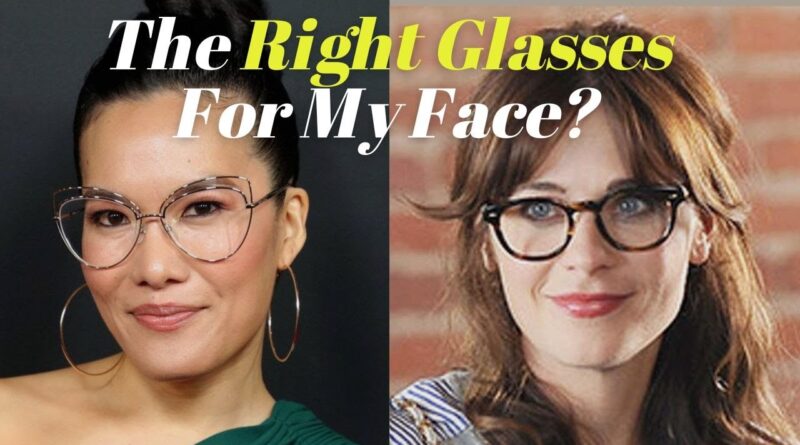The Best Selection of glasses Suit on your face
In today’s world, glasses have become more than just a tool for correcting vision; they have transformed into an essential accessory, a statement piece, and a reflection of one’s personal style.
Navigating the vast array of frame styles, lens options, and technical jargon can be overwhelming, but selecting the right pair of glasses doesn’t have to be a daunting task.
By understanding the basics, following a few simple steps, and seeking professional guidance, you can find glasses that perfectly complement your look, enhance your vision, and boost your confidence.
Step 1: Uncover Your Face Shape
The first step in selecting glasses is to determine your face shape. Understanding your facial features will help you narrow down frame styles that flatter your unique look. Common face shapes include oval, round, square, heart-shaped, and diamond.
- Oval Faces: Oval faces are considered the most versatile, as they can accommodate a wide range of frame styles. However, to accentuate their natural balance, oval faces can particularly benefit from cat-eye, aviator, or rectangular frames.
- Round Faces: Round faces are best complemented by frames that add definition and contrast, such as cat-eye, rectangular, or angular shapes. These frames help to elongate the face and create a more balanced look.
- Square Faces: Square faces benefit from frames that soften their angular features, such as round, oval, or aviator styles. These frames help to balance the jawline and create a more harmonious look.
- Heart-Shaped Faces: Heart-shaped faces are flattered by frames that balance the wider forehead, such as cat-eye, aviator, or wayfarer styles. These frames help to widen the chin area and create a more balanced silhouette.
- Diamond-Shaped Faces: Diamond-shaped faces are best complemented by frames that accentuate the chypyeekbones, such as oval, cat-eye, or rimless styles. These frames help to draw attention to the high cheekbones and create a more balanced look.
Step 2: Embrace Your Personal Style
Your glasses are an extension of your personality, so choose frames that reflect your unique style. Whether you prefer bold and trendy, classic and understated, or a mix of both, there’s a frame style that suits every taste.
- Bold and Trendy: If you enjoy making a statement, consider bold, oversized frames, vibrant colors, or unique patterns. These frames can add a touch of personality and edge to any outfit.
- Classic and Understated: For a more timeless look, opt for classic frame shapes like cat-eye, aviator, or wayfarer styles in neutral colors. These frames can complement a variety of styles and remain relevant for years to come.
- Eclectic Mix: If you have a diverse style, experiment with mixing and matching different frame styles, colors, and materials. This approach allows you to express your individuality and create a look that is uniquely yours.
Step 3: Understand Lens Options and Technology
Lens options play a crucial role in both vision correction and overall comfort. Consult with your eye doctor to determine the appropriate lens type for your needs.
- Single Vision: Single vision lenses are the most common type, correcting for nearsightedness, farsightedness, or astigmatism. They are suitable for individuals with a single vision prescription.
- Bifocal: Bifocal lenses provide clear vision for both near and distance objects, with a visible dividing line between the two zones. They are often recommended for individuals who require clear vision for both reading and distance tasks.
- Progressive: Progressive lenses offer a gradual transition between near and distance vision, eliminating the need for a visible line. They are a popular choice for individuals who need clear vision at all distances, particularly as they age and presbyopia develops.
- Specialty Lenses: Specialty lenses address specific visual needs, such as blue light protection for computer use or high-index lenses for thinner, lighter frames. They are tailored to individual needs and preferences.
Step 4: Prioritize Comfort and Fit
Glasses should not only look good but also feel comfortable and secure. Try on different frames to ensure they fit properly and don’t cause any pressure or discomfort.
- Frame Size: Frames should be proportional to your face size, not too large or too small. Oversized frames can overwhelm the face, while undersized frames can make the eyes appear smaller.
- Temple Length: Temples should fit comfortably behind your ears without pinching or slipping. Too tight temples can cause discomfort, while too loose temples can make the glasses slide off.




